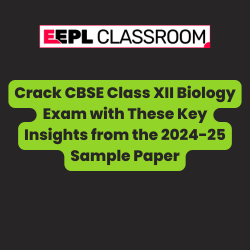
1. Introduction
- What is an atom?
- Historical development of atomic theories.
2. Subatomic Particles
- Electron:
- Discovered by J.J. Thomson (Cathode ray experiment).
- Charge and mass of an electron.
- Proton:
- Discovered by Goldstein (Canal ray experiment).
- Properties of protons.
- Neutron:
- Discovered by James Chadwick.
- Properties of neutrons.
3. Atomic Models
- Thomson’s Model:
- Plum pudding model.
- Limitations.
- Rutherford’s Model:
- Gold foil experiment.
- Observations and conclusions.
- Limitations.
- Bohr’s Model:
- Postulates.
- Energy levels and quantization.
- Successes and limitations.
4. Quantum Mechanical Model
- Introduction to quantum theory.
- Dual nature of matter and light:
- Wave nature: Electromagnetic spectrum.
- Particle nature: Planck’s quantum theory.
- De Broglie’s hypothesis.
- Heisenberg’s uncertainty principle.
- Schrödinger wave equation and orbitals.
5. Atomic Structure
- Atomic Number (Z): Number of protons in the nucleus.
- Mass Number (A): Total number of protons and neutrons.
- Isotopes, isobars, and isotones.
- Representation: ZAX_{Z}^{A}\text{X}ZAX.
6. Electronic Configuration
- Aufbau principle.
- Pauli’s exclusion principle.
- Hund’s rule of maximum multiplicity.
- Distribution of electrons in shells (s, p, d, f).
7. Applications of Atomic Models
- Use in spectroscopy
- Importance in astrophysics
- Nuclear energy applications
8. Key Formulas and Derivations
- Bohr radius formula: rn=n2h24π2me2r_n = \frac{n^2h^2}{4\pi^2me^2}rn=4π2me2n2h2
- Energy of electron in nth orbit: En=−13.6n2E_n = -\frac{13.6}{n^2}En=−n213.6 eV
- Rydberg formula: 1λ=R(1n12−1n22)\frac{1}{\lambda} = R \left(\frac{1}{n_1^2} – \frac{1}{n_2^2}\right)λ1=R(n121−n221)
9. Summary and Revision Tips
- Key differences between atomic models
- Focus on Bohr’s derivations and hydrogen spectrum
- Practice numerical problems related to energy and radii
10. Practice Questions
- MCQs: Conceptual and application-based
- Numerical problems: Calculate orbit radii, energy, wavelength of spectra
- Short-answer and long-answer questions
EEPL CLASSROOM
Surbhi kumari
7488713635
teamemancipation@gmail.com









